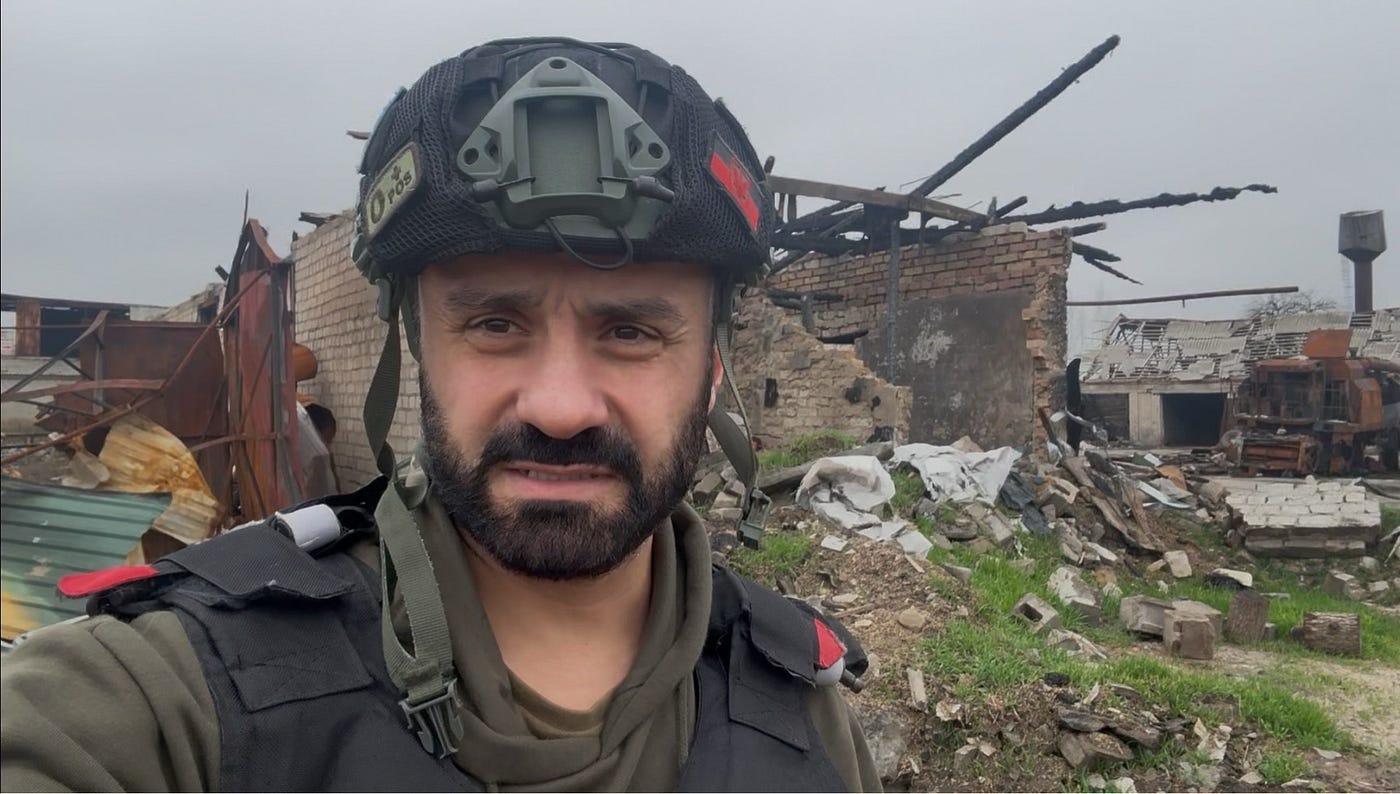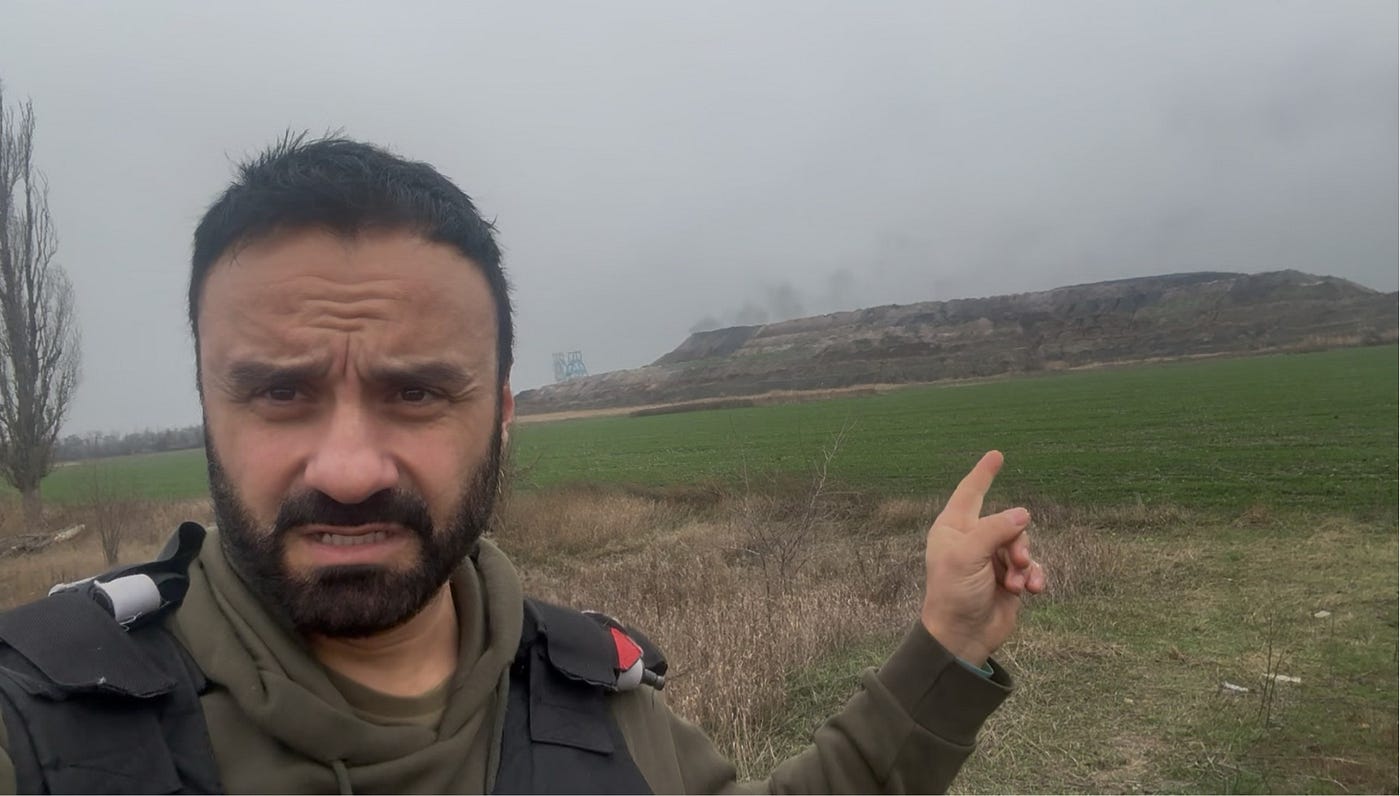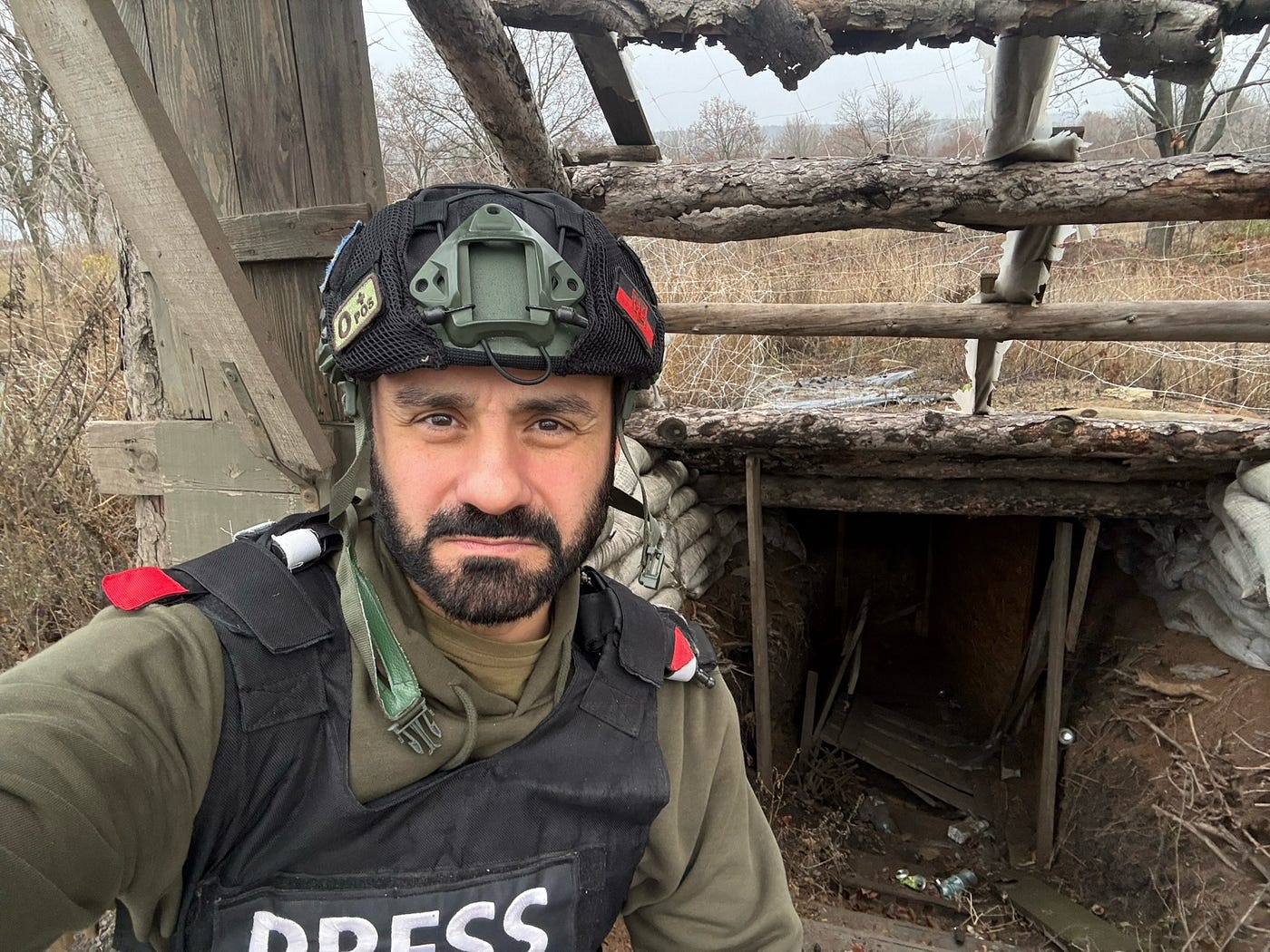From the Bowels Of War the Rejection of a Poorly Negotiated ‘Peace’ Arises
By: Giorgio Provinciali
Live from Ukraine
THANKS TO ALL WHO BACK US IN THESE HARD TIMES
Donetsk Oblast’ — Racing in Ukrainian armored vehicles through the same streets where we captured so many images of the Pokrovsk district this summer, we were able to document what’s happening today near the two hottest sectors of the front.
In the northern and eastern sectors of that devastated city, there’s no sign of Russian soldiers. The Ukrainians have repelled all attacks and created a kill zone saturated with the best aerial and ground drones at their disposal. In that hellhole, many Russian assault units refuse to enter. Beyond the railway, hundreds of corpses lie on the ground, dressed in civilian clothes but with assault weapons and ammunition at their sides.
The Russian expendables are actually ordered to jump into that meat grinder, disguising themselves to deceive the Ukrainian defenses and the small remaining local population, sometimes even ending up torn apart by their own drones.

What’s happening beyond the southwest sector can only be observed by the digital eyes of quadcopters and spy balloons. The Russian Armed Forces have established a more or less permanent foothold in Shevchenko, from which they launch continuous attacks — sometimes mechanized — along the two main roads connecting that former settlement to Pokrovsk.
There, and on the two lanes (which become four from Petrivka and Hryhorivka onward) of the former state road connecting Chunyshyne and Dachenske to Avdiivka, are hundreds of armored and assault vehicles wrecks. In its efforts to break through, Moscow has used a variety of vehicles, including ordinary cars and motorcycles. In September alone, it left over a hundred of them there, and in the following month at least fifty, before Ukrainian high-explosive bombs destroyed those roads, leaving enormous craters.
To the east lie Rivne and Myrnohrad, once-peaceful cities on which the Russian Air Force dropped three-ton glide bombs yesterday, and whose neighborhoods the occupiers are trying to infiltrate, fighting in civilian clothes.
Descending south are Hrodivka and Novohrodivka, two former residential centers now completely reduced to ruins. From here, the Russians are struggling to launch new attacks, only to be held back by minefields, ditches, barbed wire, dragon’s teeth, traps of all kinds, and an impressive number of Ukrainian drones. As far as the eye can see, we’re talking about expanses of corpses that no other soldier comes to collect because they would suffer the same fate.

Everywhere you look just behind Pokrovsk, you see the reasons Putin sent them here: the Donetsk region has 127 mines, which make up most of the country’s wealth. Before 2014, when Russia started invading Ukraine’s Donbas and illegally annexing part of it along with Crimea, the Donetsk region alone produced a fifth of the entire country’s output, with over 2,000 industrial companies operating in mining, metallurgy, chemicals, energy, and engineering. This district’s underground contains more than 2,000 kilometers of tunnels, some as deep as 1,200 meters.
Most have collapsed, flooded, or been filled with concrete, making them inaccessible.
Then there are the kopanka, illegal mines dug from abandoned mines of national interest or deep within other coal-rich areas. In that maze of tunnels, often unstable and sometimes crawling, another invisible war is being fought.
Underground explosions, gas sprays, seepage of water saturated with heavy metals and toxic substances, and lightning-fast flames are the harsh realities of a war for conquest also fought beneath the surface, precisely because of the immense riches it holds.
It is precisely from the depths of war that the rejection of a hasty and poorly negotiated conclusion arises, which would ultimately favor a new beginning.
From this perspective, we see how resigning ourselves to complacency – where those who rewrite justice and international law by favoring the aggressor disarm and plunder the attacked to the point of rewriting the Constitution – is simply unthinkable.
The plan placed by the Americans on Zelensky’s desk is an unacceptable insult to all democracies, written by the first Western country since 1945 to openly side with a colonialist and genocidal regime.
Allowing Russian terror to penetrate that womb of Donbas, which has resisted it for 12 years, is not the end of the war but its rebirth on a global scale.

THANKS TO ALL WHO BACK OUR CHARITY TO BUY DRONE DETECTORS
战争的深处生发出对拙劣谈判‘和平’的拒绝
作者: Giorgio Provinciali
感谢所有在此艰难时刻支持我们的人
帮助我们购买无人机探测器
在过去三年里,作为自由撰稿人,我们一直在乌克兰战争的所有前线进行报道,自从大规模……
https://www.paypal.com/pools/c/9kcYJAqQqQ
顿涅茨克州——我们驾驶乌克兰装甲车穿梭在今夏拍过无数照片的波克罗夫斯克地区同一条街道上,得以记录下如今前线两个最激烈区域附近的实况。
在那座遭受重创城市的北部和东部地区,没有发现俄罗斯士兵的踪迹。乌克兰军队成功击退了所有攻击,并利用手头最先进的空中与地面无人机,创建了一道击杀区。许多俄罗斯突击部队拒绝进入这个地狱般的地方。铁路线以外,地面上横陈着数百具尸体,身穿便衣,但身旁放着突击步枪和弹药。
这些“俄罗斯炮灰”实际上被命令跳进这台绞肉机里,乔装打扮以迷惑乌克兰防军和剩下不多的本地居民,有时甚至被己方的无人机肢解。
(图:我在本文描述的地方做现场报道 —— 版权所有,Giorgio Provinciali)
西南区域之外的情况只能通过四旋翼无人机和侦察气球的数字之眼进行观察。俄军已经在谢甫琴科建立了相对固定的据点,从那里沿着两条连接该旧居民点与波克罗夫斯克的主要公路,不断发起进攻,有时甚至使用机械化部队。
在那里,以及连接楚尼什涅和达琴斯克至阿夫季伊夫卡的旧国道(从彼得里夫卡和格里戈里夫卡起由两车道变为四车道)上,散落着数百辆被摧毁的装甲车辆和突击车的残骸。为了取得突破,莫斯科动用了各种各样的交通工具,包括普通汽车和摩托车。仅在九月,就有超过一百辆被遗弃在那里,接下来的一个月至少又增加了五十辆,直到乌克兰的高爆炸弹摧毁了那些公路,留下了巨大的弹坑。
东边是里夫涅和米尔诺格勒,这两个曾经宁静的城市,在昨天被俄罗斯空军投下了三吨重的大滑翔炸弹,侵略者正伺机渗透入其街区,并穿着平民的衣服作战。
向南延伸的是赫罗迪夫卡和诺沃赫罗迪夫卡,这两个曾经的居民中心如今已经完全化为废墟。在这里,俄军正苦于展开新的进攻,却被雷区、沟壕、铁丝网、龙牙阵、各种陷阱以及大量乌克兰无人机所阻碍。放眼望去,满地都是尸体,没有其他士兵前来收集,因为他们也会遭遇同样的命运。
(图:我,在一篇報道中展示了乌克兰顿巴斯的采石场——版权所有,Giorgio Provinciali)
在波克罗夫斯克附近,四处可见普京派遣俄军到这里的原因:顿涅茨克地区拥有127个矿山,构成了国家财富的大部分。2014年前,当俄罗斯开始侵略乌克兰的顿巴斯并非法吞并部分地区以及克里米亚时,仅顿涅茨克地区就占据了整个国家产出的五分之一,拥有超过2000多家工业公司,从事采矿、冶金、化工、能源和工程等领域。该地区的地下有超过2000公里的隧道,部分深达1200米。
大多数隧道已经倒塌、被淹没或被混凝土填满,变得无法进入。
还有所谓的“kopanka”,从国有废弃矿井或其他富煤区深处挖掘而成的非法矿洞。在这片常常不稳定、偶尔蜿蜒盘旋的隧道迷宫中,另一场看不见的战争正在进行。
地下爆炸、气体喷涌、饱和重金属和有毒物质的水渗漏,以及迅雷般的火焰,构成了为了征服而在地表之下进行的战争的严酷现实,正是因为这里蕴藏着巨大的财富。
正是源于这场战争的深处,我们拒绝仓促且谈判不善的结论,而这样的结论只是新一场战争的开始。
从这个角度,我们看到,向自满妥协——那些通过偏袒侵略者重写正义和国际法的行为,使被攻击者被解除武装并掠夺到重写宪法的地步——简直是不可想象的。
美国人摔在泽连斯基桌子上的计划,是对所有民主国家的不可接受的侮辱,它是自1945年以来,第一个由西方国家所撰写的公开支持殖民主义和种族灭绝政权的计划。
允许俄罗斯恐怖深入到抵抗了12年的顿巴斯的“发源地”,并不是战争的结束,而是其在全球范围内的重生。
(图:在撰写此文前片刻,我在顿巴斯一个矿道的入口——版权所有,Giorgio Provinciali)